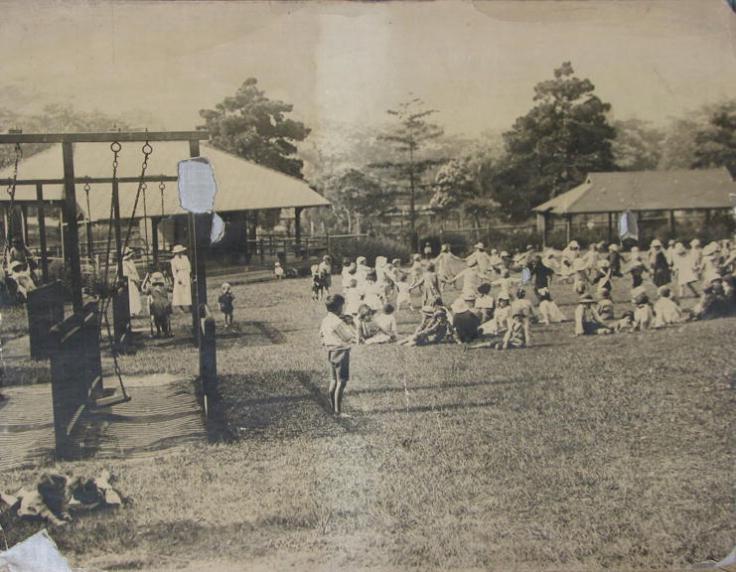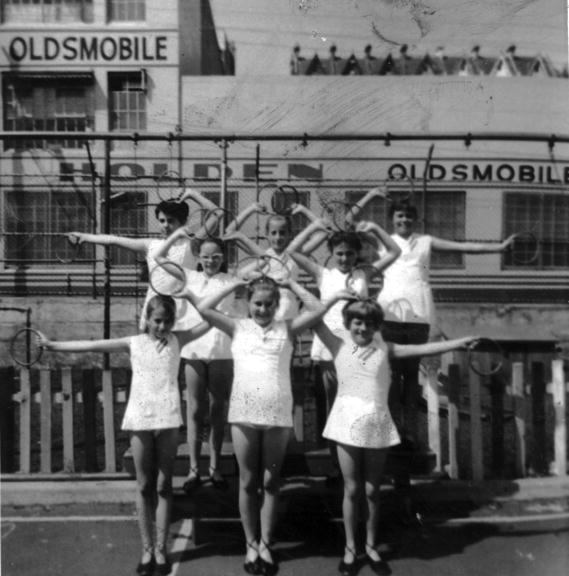What has been the place for children in Sydney’s urban spaces, historically speaking? This week on Scratching Sydney’s Surface, we’re going to take a look at the development of children’s playgrounds in Sydney in the 20th century.
Some of the earliest examples of children’s play areas in Sydney were outdoor gymnasia established in around 1902 within The Doman and Centennial Park by the park trustees. The gymnasia were opened limited hours, had shelter sheds and were supervised by a caretaker. Play equipment included chain swings, see saws, sliding planks, trapeze bars, ladders, parallel bars, Roman rings and a sand-box.

Other early playgrounds were usually established within already existing parks near or adjoining school grounds. There were playgrounds at Victoria Park (near Sydney University) and at Prince Alfred Park near Cleveland Street Public School in the first decades of the 20th century.
So why was it important to have dedicated play spaces for children in inner Sydney in the early 20th century?
By the early years of the 20th century, Sydney was becoming increasingly crowded and congested. Many houses lacked back yards where kids could play, and most parents were working full time, leaving the young ones to their own devices. The increase in motor traffic meant that it was becoming dangerous for children to play on the streets. As well, there were regulations that meant that children couldn’t run amok in the established parks like Hyde Park.
Both individuals and community groups lobbied for the establishment of playgrounds in inner Sydney. One of the key movers and shakers in the early 20th century was the Playgrounds Association of NSW, formed in 1913. It was the driving force behind the creation of 5 playgrounds in inner Sydney in the second decade of the 20th century, i.e. Victoria Park playground next to Sydney University.
Later, individuals (usually women) took up the cause. For example, both May Pitt in Glebe and Lillian Fowler in Newtown campaigned for play areas for children. Both have playgrounds named after them.
At the other end of the social scale, Danish-born ballet dancer Helene Kirsova bought up tracts of land for playgrounds in Glebe and Erskineville, using profits from her ballet company.

By the 1930s, supervised playgrounds were introduced to Sydney as a way to keep children off the streets and to keep them from a life of juvenile delinquency. A supervised playground was different to a normal playground in that staff were employed to guide and monitor the children as they played. The first supervised playground was at Moore Park. There were around 10 established in inner Sydney through to the 1970s.
Leave a comment